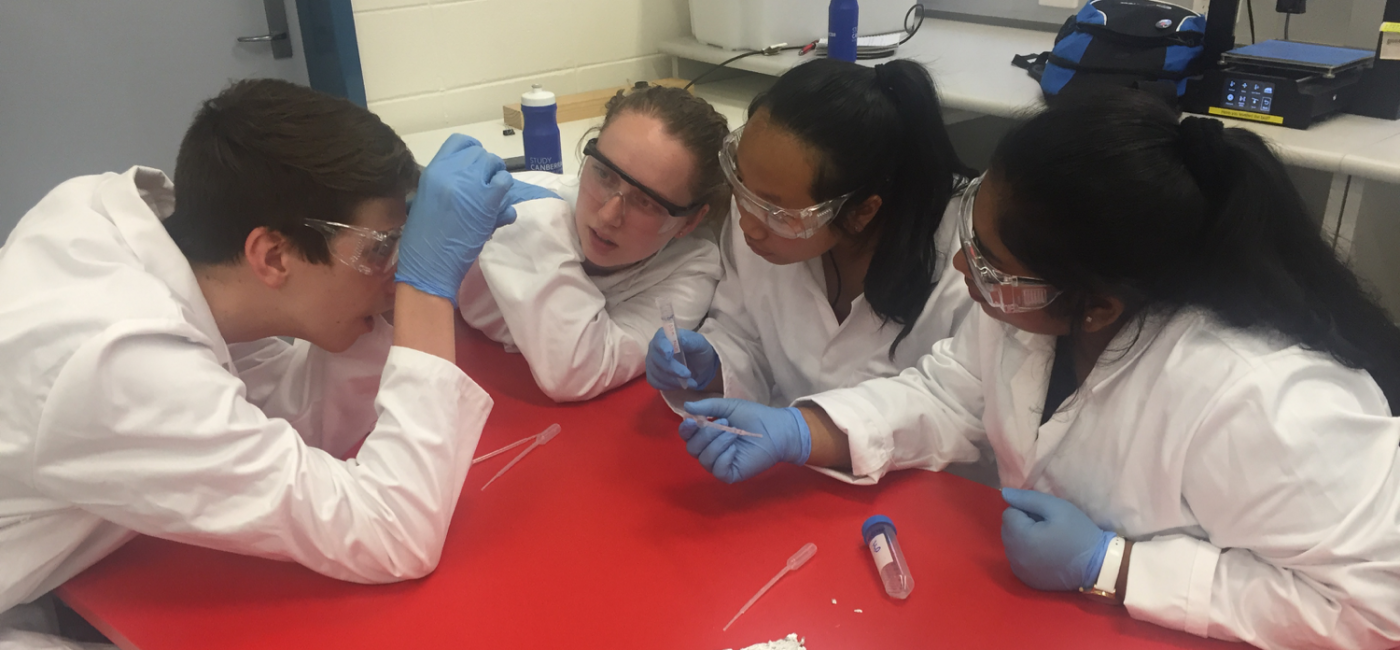
“When people are asked to think of Biomedical Engineering, the majority will first think of medical devices. But, in fact there is so much more to it.”
Kicking off the elective STEM visits, where NYSF students had the opportunity to choose visits according to their personal interests, an exciting session in Biomedical Engineering was hosted by Dr Kiara Bruggeman. Recently completing her PhD in Biomedical Engineering at ANU, Dr Bruggeman has a passion for using engineering principles to solve fundamental challenges in medicine. With a particular focus in her research area of tissue engineering, the students were given an introduction into the possibilities of Biomedical engineering from a true insider.
“When people are asked to think of Biomedical Engineering, the majority will first think of medical devices. But, in fact there is so much more to it.”
Using examples from bioinformatics, microfluidic devices, nanoparticle drug delivery and tissue engineering, the students were left in awe of the seemingly science fiction achievements that have come from the field.
In drawing from her own research area, Dr Bruggeman then introduced the concept of replacing diseased brain tissue with synthetically engineering healthy brain tissue. To do this, engineers design a scaffold-like structure, called an extracellular matrix, which can trick stem cells into thinking they are in the brain and should therefore differentiate to become healthy brain cells. Armed with a list of possible materials, the NYSF students engaged in heated discussions about the best materials to create such synthetic matrices; taking into account morphological, chemical, physical and biological considerations.
Students were then invited to make one such type of brain extracellular matrix, called self-absorbent polymer (SAP) hydrogels, used heavily in Dr Bruggeman’s cutting-edge research. With the primary ingredient quoted to be worth $1000 per gram, she urged students to be careful, “Biology is expensive!” She told students she once worked with a powder worth $1000 for 0.15 milligrams. That’s almost $7 million per gram! Wouldn’t want to spill that...
For a bit of fun to take home, students were also able to make a less expensive hydrogel made from PVA glue, borax and food colouring, aka slime! A recipe for a big mess… I’m sure she regretted the food colouring later...
Check out the video for a snapshot of the students making their SAP hydrogels and slime!
Thank you to Dr Bruggeman for letting us get hands-on with cutting-edge Biomedical Engineering research.
Brooke Krajancich, Communications Intern NYSF 2018 Session A and NYSF Alumna 2013.